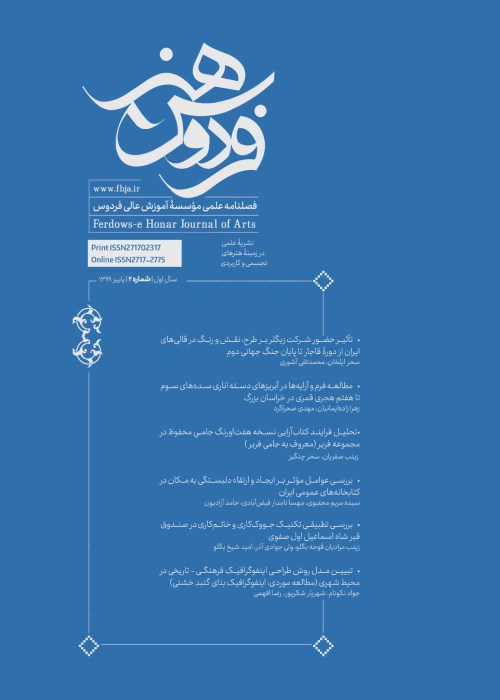A Study of Luxury in Umayyad Art in Damascus and Andalusia
Mu'awiyah became the caliph in 41 AH after the Rashidun caliphs and initiated the Umayyad rule in Syria. Of course, the Umayyad dynasty began in 18 AH (during the Caliphate of Umar) in this part of the Islamic world and the Umayyad dynasty in Syria ended in 132 AH. The Umayyad dynasty was founded in 138 AH by one of their survivors, Abdul Rahman Dakhil, in Spain in 138 AH, and continued until 422 AH. The Umayyad rulers and caliphs of Spain, like their Syrian ancestors, sought to have fun. With the beginning of the Umayyad dynasty after the Rashidun caliphs, the way of governing in Islamic civilization changed and moved away from the simplicity of life and equality and brotherhood that was in the beginning of Islam. . Many historical books refer to the luxurious and monarchist nature of this family, which according to historical documents can be considered the legacy of their ancestors, Mu'awiyah, and some artworks that left from this period are also different from other periods in terms of luxury. Some of these works are so in conflict with the beliefs, religion and character of Islam that some scholars have called them blasphemous art that have never been repeated in the history of Islamic art. The Umayyad artefacts have been studied separately in previous studies, but so far no research has been done to study these works from the perspective of features such as "luxury". Therefore, considering that artworks are tools that put human beings in direct contact with the culture of historical periods, the purpose of this study is to identify the royal aspects of Umayyad rule based on their artworks. Accordingly, the purpose of this study was to examine the works of art of the Umayyads in Syria and Andalusia in terms of displaying their luxurious aspects and to find out how and in what way these works met the goals of their rulers.The questions that we want to answer are these: What are the most important works of Umayyad art? and What are the luxuries of the Umayyad dynasty? And how did these works achieve the goals of their owners? In this article, to answer these questions, at the first stage, Historical and religious books were studied, and then their content was analyzed, In the second step, the Umayyad artworks, including Architectural structures and artworks kept in museums, were studied and analyzed. Studies show that the spirit of luxury of the Umayyad can be seen from Damascus to Andalus, through their surviving artworks.The Umayyad dynasty is the period of the construction of huge and glorious mosques that have been used for a lot of money. These mosques are called royal mosques in art history books. Mosques such as the Dome of the Rock in Jerusalem, the Grand Mosque in Damascus and the Cordoba Mosque are examples of such mosques. Through those mosques, the Umayyads displayed the power and glory of their empire. The elements that were added to the mosques, such as the "minbar" (pulpit) and the “maqsoorah” and the “mihrab” (altar), are related to showing the position and authority of the Umayyad caliphs.In addition to mosques and their elements, royal palaces and baths have survived from the Umayyad period. The decorations inside these structures, including paintings and sculptures, all reflect the Umayyad luxury character. After the collapse of the Umayyad rule in Syria, their aristocratic character continued in Spain by their survivors. The construction of a magnificent mosque full of decorations in Cordoba demonstrates this. The construction of palaces in Spain continued so much that now the best Islamic palaces such as Madinah Al-Zahra and Al-Hamra are preserved in this land. Manifestations of Umayyad luxury can also be identified in their other works of art. The use of the word "king" to mean king on Spanish pottery and the presence of motifs such as portraits of musicians, singers, and dancers on works of art also reflects the way the Umayyad rulers lived and how they spent their leisure time. The presence of perfumers in the hands of the king and the presence of musicians next to them are all symbols of royalty and luxury.
- حق عضویت دریافتی صرف حمایت از نشریات عضو و نگهداری، تکمیل و توسعه مگیران میشود.
- پرداخت حق اشتراک و دانلود مقالات اجازه بازنشر آن در سایر رسانههای چاپی و دیجیتال را به کاربر نمیدهد.



